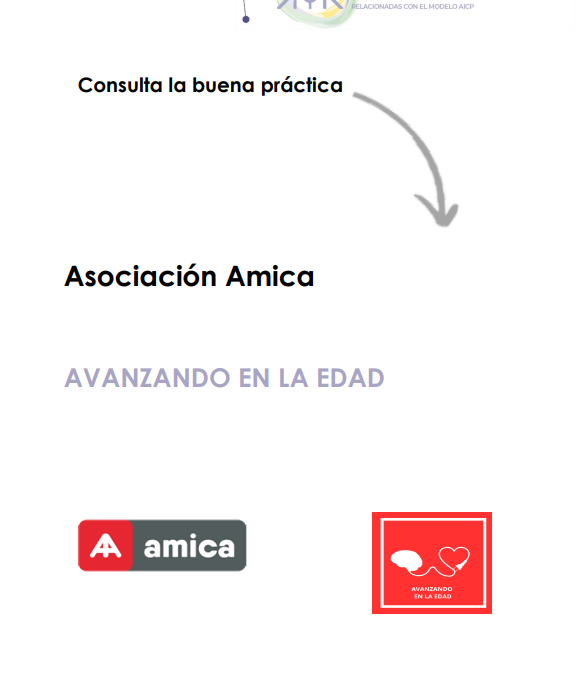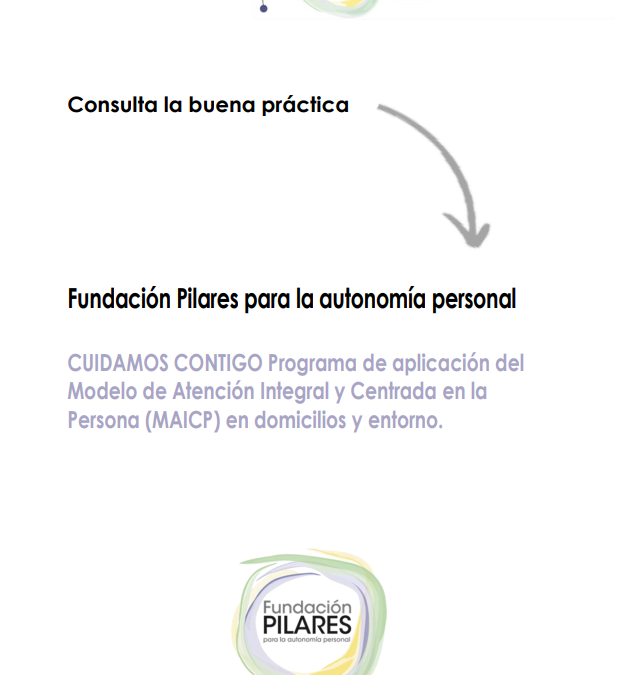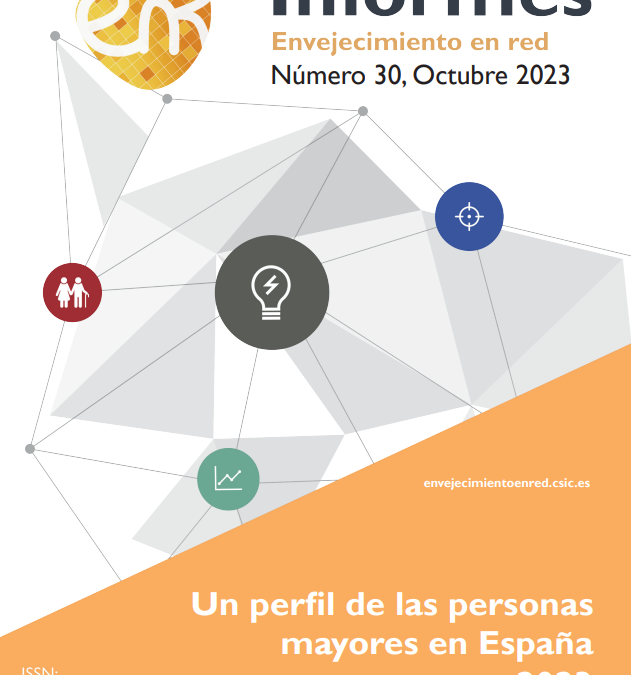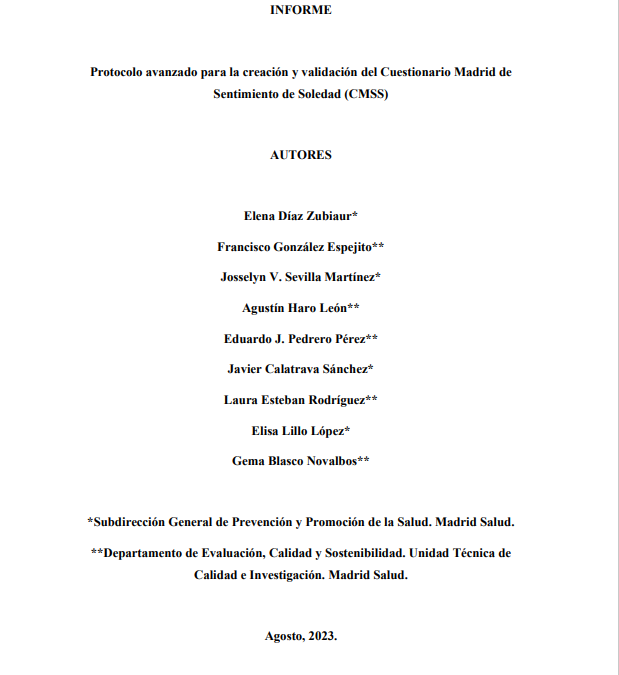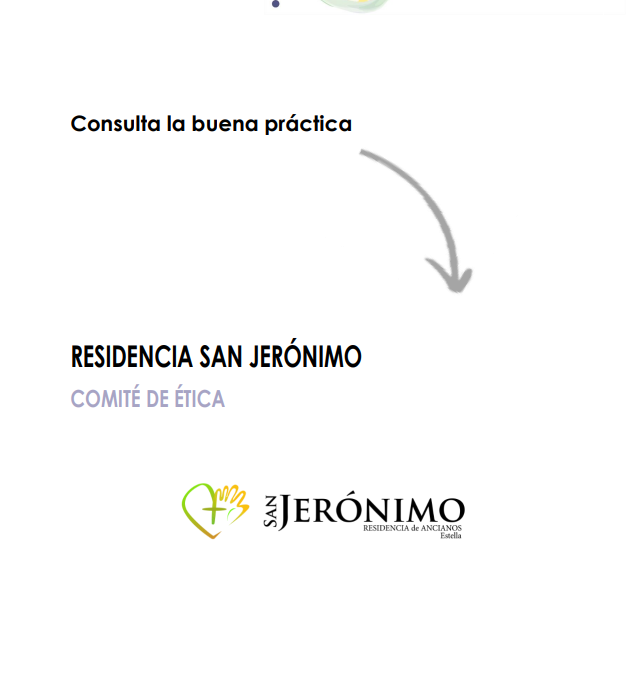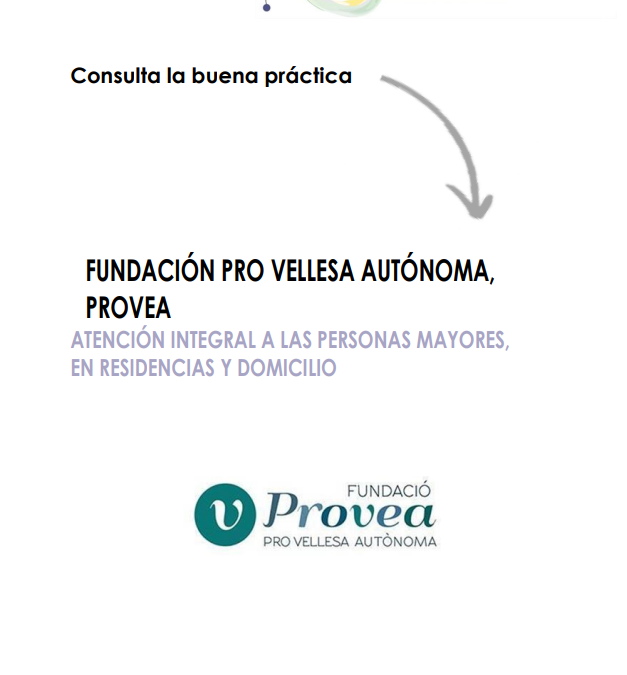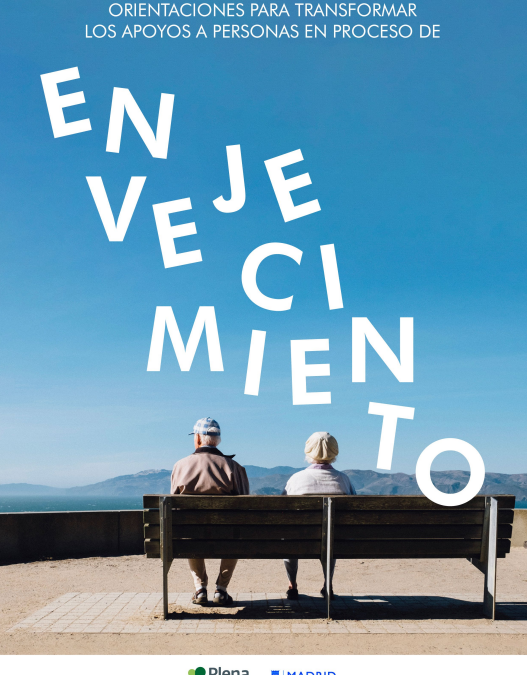🎥Video “Accesibilidad para la seguridad espacial cognitiva con enfoque AICP”...
A fecha 31 de diciembre de 2023 había en España 1.567.107 (76.000 más que en 2022) personas en situación de dependencia reconocida y otras 117.187 pendientes de valoración. Esto significa que el 3,6% de la población española necesita apoyos de mayor o menor intensidad para desarrollar las...
El presente estudio forma parte del Estudio sobre los procesos de desinstitucionalización y transición hacia modelos de apoyo personalizados y comunitarios (en lo que sigue EDI), financiado por el Ministerio de Derechos Sociales y Agenda 2030 dentro del Plan de Recuperación Transformación y Resiliencia. Su finalidad es presentar un diagnóstico fiel de la realidad y la situación de la que partimos y ofrecer un asesoramiento eficaz sobre el modo más adecuado de abordar con garantías el cambio de paradigma en el modelo de cuidados y apoyos en el ámbito de las personas con discapacidad, las personas mayores, las personas en situación de sinhogarismo y en la infancia y juventud en situación de exclusión social.
El objetivo concreto de este informe es proyectar el análisis desarrollado en el estudio EDI en el ámbito específico de la atención, cuidados y apoyos que demandan las personas mayores.
El estudio se divide fundamentalmente en cuatro partes:
Una primera parte introductoria donde se presenta el marco conceptual y referencial que orienta el estudio, es decir, las bases teóricas a través de las cuales se analiza la realidad y problemática sobre las necesidades de apoyos y cuidados de las personas mayores en nuestras sociedades. Este marco conceptual y referencial será también el que nos posibilite detectar alternativas y construir procesos de desinstitucionalización coherentes con las necesidades previamente detectadas.
Una segunda parte en la que se presentan y analizan recomendaciones sobre los procesos de desinstitucionalización, así como alternativas de vida útiles para la realidad española.
En la tercera parte, se presenta el marco necesario para el desarrollo de procesos de desinstitucionalización en España, para ello se desarrolla un marco ético-cultural sobre el que asentar el cambio de paradigma que suponen los procesos de desinstitucionalización, se perfilan los principales cambios jurídicos necesarios y se esboza la configuración de toda una red de apoyos y servicios de base comunitaria y familiar.
Este informe ha sido elaborado a partir de amplios estudios realizados por investigadores e investigadoras que han formado parte del grupo de trabajo sobre personas mayores. Estos estudios pueden consultarse íntegramente en los anexos a este informe y en ellos pueden encontrarse un desarrollo más exhaustivo de los diferentes puntos a los que se refiere el presente informe.
Para la elaboración del estudio y todos los productos que de él derivan se han aplicado técnicas metodológicas diversas desde todas las perspectivas necesarias. Así se realizaron las siguientes tareas:
Recogida y análisis de datos secundarios, esto es, estudio de la literatura más importante referida a los cuatro grupos mencionados y datos estadísticos disponibles como forma de enmarcar la realidad de los distintos sectores Realización de entrevistas semi-estructuradas. La realización de entrevistas constituyó el centro del análisis sociológico como forma de acercamiento a los discursos de las personas partícipes en los procesos de cuidados. Para seleccionar posiciones discursivas se tuvieron en cuenta diversas variables, ya que solo así se puede acceder a las distintas posiciones sociales que conforman la construcción social de los cuidados. También, se llevaron a cabo grupos de discusión.
Y, por último, realización de encuestas a personas involucradas en servicios residenciales tanto a personas institucionalizadas como a diferentes perfiles de trabajadores lo que implicó la aplicación de una técnica cuantitativa (de medición) complementaria de las técnicas cualitativas (de discurso) que se han explicado previamente. En este caso la idea de aplicación de esta metodología fue conocer la calidad de vida y satisfacción con la misma de las personas usuarias de residencias principalmente, pero también de otros recursos.
Avanzando en la Edad” es un programa integral de la Asociación Amica, diseñado para potenciar el envejecimiento activo y mejorar la calidad de vida de las personas en esta etapa vital. Nos enfocamos en prevenir limitaciones físicas y cognitivas, al tiempo que fomentamos la exploración y...
📽️Video Programa Cuidamos Contigo
Desde hace más de dos años, la mayoría de la actividad profesional de los sanitarios se ha focalizado en cinco letras: C-O-V-I-D. Todo el esfuerzo no solamente técnico si no económico, se dirigió a las acciones y actividades alrededor de la pandemia “asesina” y el objetivo de disminuir sus consecuencias. Así ha sido y aún sigue siendo, pero con mucha menor intensidad, toda vez que ya van surtiendo efecto las medidas llevadas a cabo en el ámbito terapéutico y epidemiológico. Es por ello que el grupo de trabajo de demencias de la SEGG ha incorporado el propósito de realizar una publicación que reavivara el debate sobre la situación de las demencias en nuestro sistema sanitario, que actualizara algunos conceptos y medidas que estábamos llevando a cabo, y que motivara al amplísimo arcoíris de profesionales que nos dedicamos a la atención de estos pacientes, sus familiares y sus circunstancias. Además, ubicar a la demencia y los que la padecen en el sitio que le corresponde como objetivo de salud, alertando al resto de implicados en la asistencia de manera directa e indirecta, sobre la presencia de una enfermedad que no va a parar de aumentar el número de afectados, ni de reclamar recur-sos, ni de influir en dinámicas familiares o sociales, ni de seguir filtrándose poco a poco, pero cada vez más, en todas las esferas de la sociedad.Y por encima de todas estas consideraciones, ha sido nuestro objetivo reforzar la idea de la necesidad de humanizar el trato con el paciente demente, de ubicar-lo en un plano, humano y por tanto necesitado de todo aquello que una persona humana necesita.Esta publicación es el resultado de un esfuerzo conjunto de profesionales de diferentes puntos de nuestra geografía dedicados a distintos perfiles sanitarios, con un trabajo habitual que consume la mayoría de su tiempo y el de sus familias y amigos, pero unidos y motivados por la sensibilidad ante la problemática de los dementes. Todos los profesionales que han hecho realidad este proyecto gozan de un reconocido prestigio en nuestro entorno y más allá del mismo. Discutiendo el temario en el grupo de trabajo de demencias, concluimos que no era nuestra intención elaborar un “Tratado de actualización”, que revisara cada tópico estructurado a los que habitualmente nos exponen los textos. Preferimos elegir determinados temas de actualidad que están siendo motivo de debate. En algunos de ellos aún no hay conclusiones definitivas, pero esperamos con este modesto esfuerzo, motivar a los profesionales para que no solo aumenten su campo de visión, si no que mediten y opinen sobre los mismos.
Este decálogo, elaborado desde la Red CuidAs a través del GOE 5, un grupo de trabajo dedicado a promover la sensibilización social hacia una nueva mirada al cuidado, pretende orientar, alimentar la reflexión y generar sinergias en las necesarias iniciativas que, desde distintos lugares, servicios y entidades, precisan seguir siendo impulsadas para ir transformando la actual visión del cuidado de larga duración y de las personas implicadas en el mismo.
En su primera parte, se comparten siete consideraciones sobre las personas que necesitan apoyos o cuidados. Su segunda parte, se dedica a las personas que cuidan y al significado del cuidado.
Estamos ante un cambio cultural. Un proceso largo y complejo que requiere de alianzas y de una visión compartida. La mirada a las personas, en plural, implicadas en el cuidado, y al significado del mismo, es el necesario punto de partida.
Esperamos que este decálogo, concebido como un documento abierto, sea de ayuda en este tránsito.
Un perfil de las personas mayores en España 2023 continúa la serie de informes realizados por Envejecimiento en red con el objetivo de proporcionar una visión conjunta de las condiciones de vida de la población de 65 y más años.
Se utilizan datos de fuentes nacionales e internacionales para construir indicadores sobre la evolución demográfica, la salud y las características económicas y sociales de esta población. Se trata de fuentes generadas por organismos de confianza. Los indicadores construidos se presentan de manera divulgativa y con los menores tecnicismos posibles, sin jerarquizarlos prejuzgando su relevancia, y se han seleccionado entre los que pueden ser calculados periódicamente, con continuidad, y son representativos del conjunto de la población mayor.
¿Cuántas personas mayores residen en España? ¿Seguirá el proceso de envejecimiento en el futuro? ¿Cuántos años pueden esperar vivir y cuántos en buena salud? ¿Qué enfermedades padecen? ¿Cuáles son las principales causas de muerte? ¿Tienen suficientes recursos económicos? ¿Cuántas están por debajo del umbral de la pobreza? El Informe trata de ilustrar de forma gráfica algunas respuestas a estas y otras cuestiones.
La soledad no deseada es un problema individual y social, que en las últimas décadas ha adquirido un enorme interés, dada su elevada prevalencia y las graves consecuencias a las que se asocia. Una prueba inequívoca de su importancia es la creación en dos países del primer mundo, Reino Unido y Japón, de ministerios que aborden el problema y encuentren soluciones eficaces. En otros países, sin llegar a estas respuestas institucionales de orden superior, es un problema cuyas dimensiones han alcanzado una magnitud alarmante y se han dispuesto medidas, más o menos ambiciosas, para su control.
En los apartados siguientes se expondrán los conocimientos actuales sobre el problema, su prevalencia, sus consecuencias y los métodos para detectarla.
📽️Video Mi Casa una vida en comunidad
📽️Video Vivir con voz propia
La presente Guía contiene pautas prácticas para que las personas de 65 o más años reconozcan y reivindiquen sus derechos desde la particiación y el envejecimiento activo, especialmente aquellas que se encuentran en riesgo de pobreza y/o exclusión social.
El desarrollo de actuaciones que tratan de mejorar la calidad de vida de las personas mayores parten muchas veces desde la mera inmediatez o intuición. Sin embargo, para su correcta implantación, es necesario hacer un diseño previo que permita centrar las acciones y conseguir la consecución de los objetivos previamente definidos. En esta obra, el sociólogo Víctor Omar Dabbagh Rollán presenta una guía práctica para la elaboración de proyectos, tanto de intervención como de investigación, que tengan como objeto avanzar en el Modelo de Atención Integral y Centrada en la Persona (MAICP).
Esta guía está dirigida a profesionales que apoyan a personas con discapacidad intelectual o del desarrollo adultas, con el fin de ayudarles a identificar el envejecimiento prematuro y proponer herramientas y estrategias de apoyo para la intervención.
A lo largo de sus páginas se definen algunos conceptos que contextualizan la intervención con esta población y se identifican los signos del envejecimiento.
El profesional también encontrará recomendaciones para la evaluación y valoración de la persona y varias herramientas, recursos y productos de apoyo para acompañarlas de manera personalizada.




